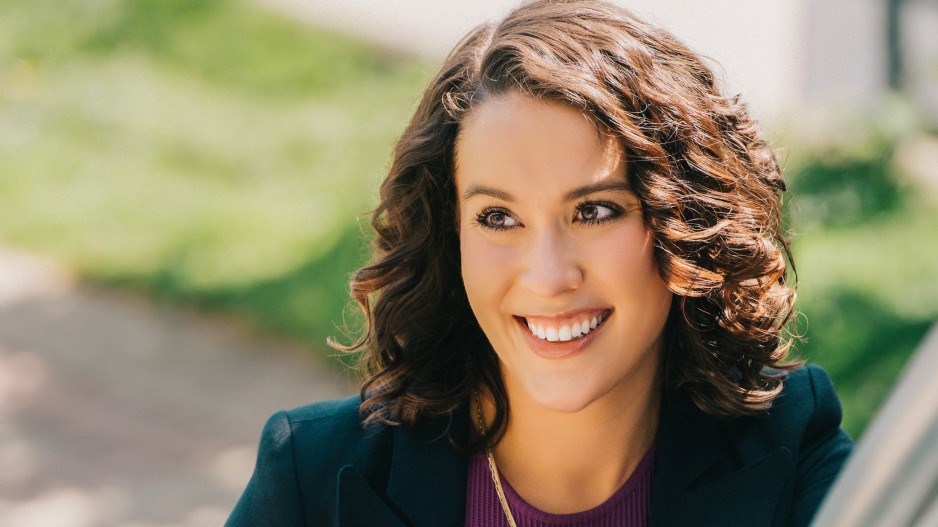B.C.’s new and controversial Rental Protection Fund, officially launched Wednesday, has named former Beedie executive Katie Maslechko as CEO.
The $500 million fund, backed by the B.C. government, aims to help First Nations and other non-profit groups buy older “affordable” rental buildings to preserve them as low-cost rental housing.
Maslechko is the former director of development for Vancouver-based real estate developer Beedie, and has street cred in working with non-profits.
Maslechko chairs the Urban Land Institute’s Public-Private Partnership Product Council, comprised of leaders in city-building from across North America in public, private and quasi-public roles. She previously served as a non-profit board director, and on the Urban Development Institute’s Women of UDI Committee.
“I am delighted to be part of the Rental Protection Fund, and to join with the Housing Central partners in delivering innovative solutions to the housing affordability crisis,” Maslechko said.
The Housing Central partners – the Aboriginal Housing Management Association (AHMA), BC Non-Profit Housing Association (BCNPHA) and the Co-operative Housing Federation of BC (CHF BC) – have advocated for a rental housing acquisition fund for several years to help stem the net loss of affordable homes.
For every new affordable rental home that is built, three more are lost to conversions, demolition and rent increases, the partners noted.
The Rental Protection Fund will enable non-profit housing providers to purchase existing residential rental buildings “and protect their affordability for current and future residents.”
The fund is overseen by a board of directors drawn from the non-profit partners and will be operated by Maslechko and her staff.
“I am truly excited by the ripple effect this investment will create by putting it in the hands of the community housing sector,” Maslechko said. “Not only will it permanently protect affordable homes, it will also create more equitable access to capital.”
‘Waste’ of taxpayers’ money
The plan is not without critics, however, including non-profit housing providers.
Ken Fraser, executive director of the non-profit Vancouver Resource Society, which purchases apartment units designated as below-market rentals from developers, sees the $500 million fund as a money loser.
“I wouldn’t waste taxpayers’ money buying old dilapidated 50-year-old apartment buildings,” he said, noting that it is difficult to even get insurance on aging stock that needs expensive wiring, plumbing and HVAC upgrades.
“It makes common sense to allow a developer to buy an old 20-unit property on a large lot and build 60 to 70 units of modern rentals that would last another 50 years," Fraser said.
There is also some doubt the fund would save many rentals, at least in Metro Vancouver. Of the older apartment building sales in the region sold so far this year, the average price per door has been $400,000. This means that the $500 million rental fund, if fully subscribed, would salvage no more than 1,250 rental units in the area most in need of affordable rentals.
Andrey Pavlov, Professor of Finance, Beedie School of Business, Simon Fraser University, is also skeptical.
“Think about it,” he said. “Amid a severe housing shortage, the B.C. government is spending $500 million of taxpayer money not to build additional housing, but to stop people who want to build it.”
Pavlov labelled the program “a rental destruction fund.”
Still, owners of apartments, including Canadian Apartment Properties Real Estate Investment Trust (CAPREIT), Canada’s largest landlord, appear eager to have non-profits take old, underperforming assets off their books.
Calling the fund “a wonderful, wonderful acquisition program”, CAPREIT CEO Mark Kenney told Western Investor it has offered older buildings with a total of about 1,000 units to the Rental Protection Fund. It is part of national sell-off of CAPREIT aging rentals, presumably those most in need of repairs and maintenance, as the company focuses on building and buying new rental assets.
Ironically, B.C. Premier David Eby singled out “speculators and large corporations, such as real estate investment trusts” as the bogeyman buying the older apartments when he announced the fund in January,
Maslechko’s office told Western Investor that no decisions have yet been made on acquisitions, noting that it is non-profits that will initiate any purchases.
In the meantime, Maslechko encourages potential applicants, municipalities and lenders to think creatively about how they can leverage a potential contribution from the fund to deliver the greatest possible impact in their communities.
How to apply
The Rental Protection Fund Society has a three-stage process for eligible applicants seeking contributions from the Rental Protection Fund:
Stage 1: Pre-qualification of non-profit housing organizations. In this first stage, non-profit housing providers will pre-qualify to ensure they meet specific eligibility criteria, as well as financial and operational requirements, including capacity, housing experience, mission and more. Applicants will need to pre-qualify before moving ahead in the application process.
Stage 2: Pre-qualification of eligible properties. Upon successful pre-qualification, organizations can move on to Stage 2, where they can make inquiries to the fund on proposed properties to ensure they qualify for acquisition.
Stage 3: Acquisition proposal review and decision. Qualifying organizations and properties for sale that reach this final stage must submit formal acquisition proposals that will be reviewed by an Investment advisory committee (IAC). The IAC will recommend projects based on criteria set out by the fund to Maslechko for the final decision.




